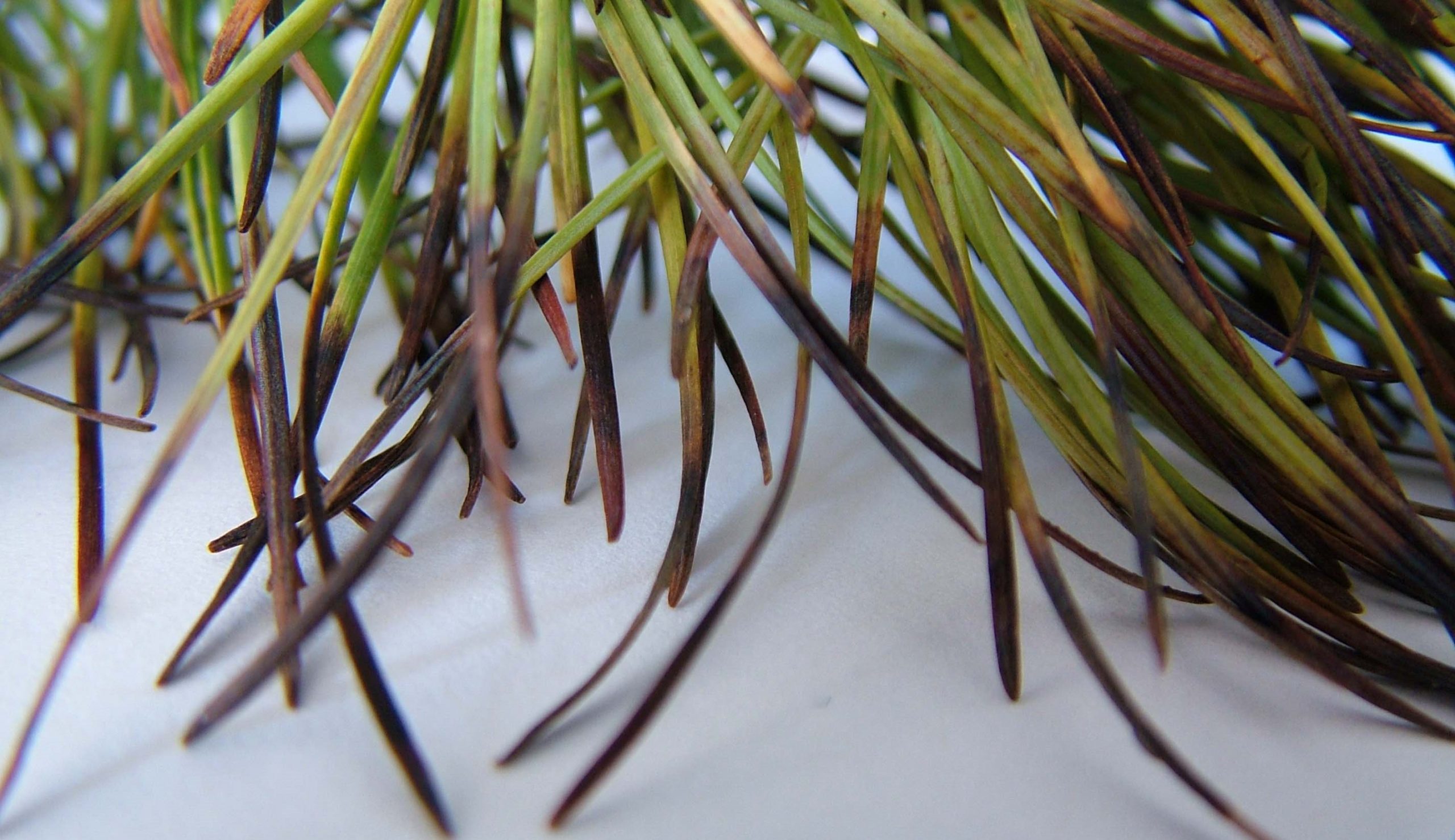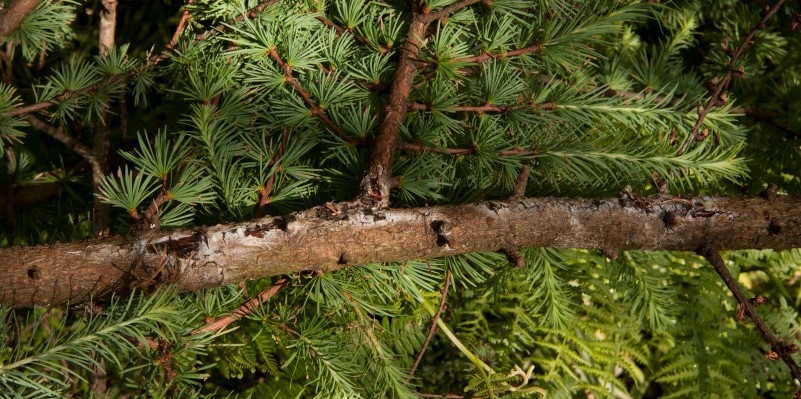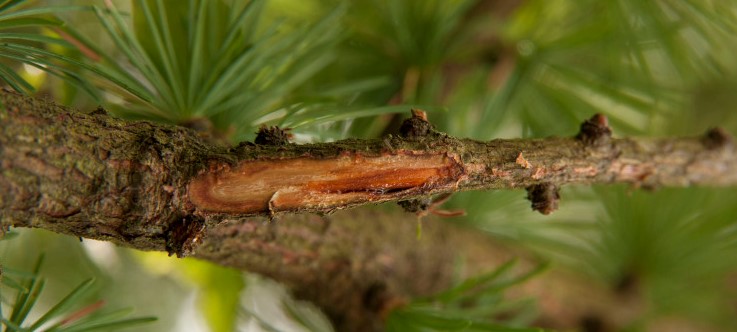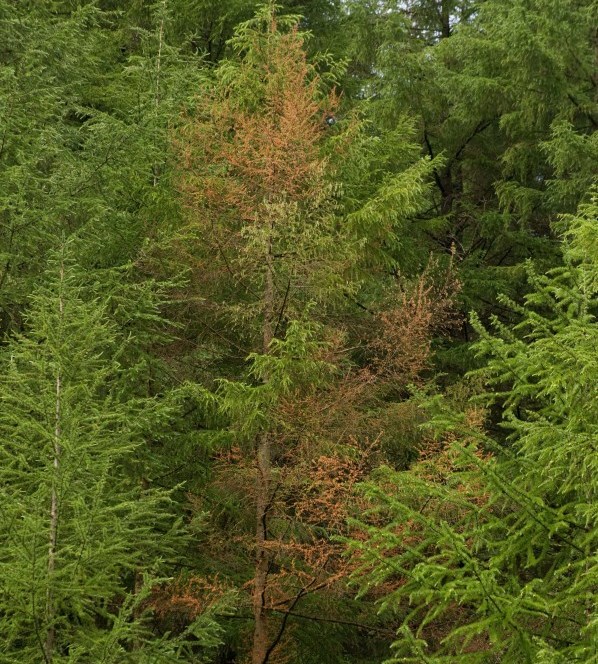The following information will help you to recognise when certain woodland trees and other plants might be infected by the water mould Phytophthora ramorum. This destructive pathogen causes a range of conditions, collectively known as ramorum disease, in a wide range of plant species.
Ramorum disease symptoms on trees include lesions, or bleeding cankers, which exude, or ooze, fluid from infected bark. This exudate can dry to a crust on the trunk, and the inner bark under this bleeding area is usually discoloured and dying. Trees die when the lesions become extensive on the main trunk.

The shoots of the foliage of larch trees can also be affected. Symptoms include wilted, withered shoot tips with blackened needles (above). The infected shoots shed their needles prematurely. Trees with branch dieback can also have numerous resinous cankers on the branches and upper trunk.
The following documents have illustrations and explanations of various symptoms on trees.
There are more pictures of symptoms on larch trees at the bottom of this page.
P. ramorum infects the leaves and shoots of ornamental shrubs such as rhododendron, viburnum, pieris and camellia. Rhododendron ponticum is an invasive, non-native species found in many British woods and forests.
Infected leaves of some of these foliar hosts can generate many spores, and in sufficient numbers these spores can then infect the bark of some tree species. Rhododendron ponticum produces large quantities of spores, putting nearby susceptible trees at particular risk.
Typical symptoms on rhododendron include leaf blackening, wilted shoots and dieback. On individual leaves, blackening of the leaf stalk usually extends into the leaf along the mid-vein, although blackening at the leaf tip can also occur. The progress of the disease can be so rapid that shoots wilt, and the leaves hang down.
Suspected cases of ramorum disease on trees or other woodland plants must be reported to the forestry authorities. If you think you have seen ramorum disease on a tree or other forest or woodland plant, please check them against the guides to identification above before making your report.
Note that TreeAlert and TreeCheck both require photographs of symptoms to be uploaded.

Lesions on the underside of a larch branch

Infection on larch showing discolouration under the bark

Young Japanese larch tree killed by ramorum disease

Dieback of Japanese larch caused by P. ramorum infection.